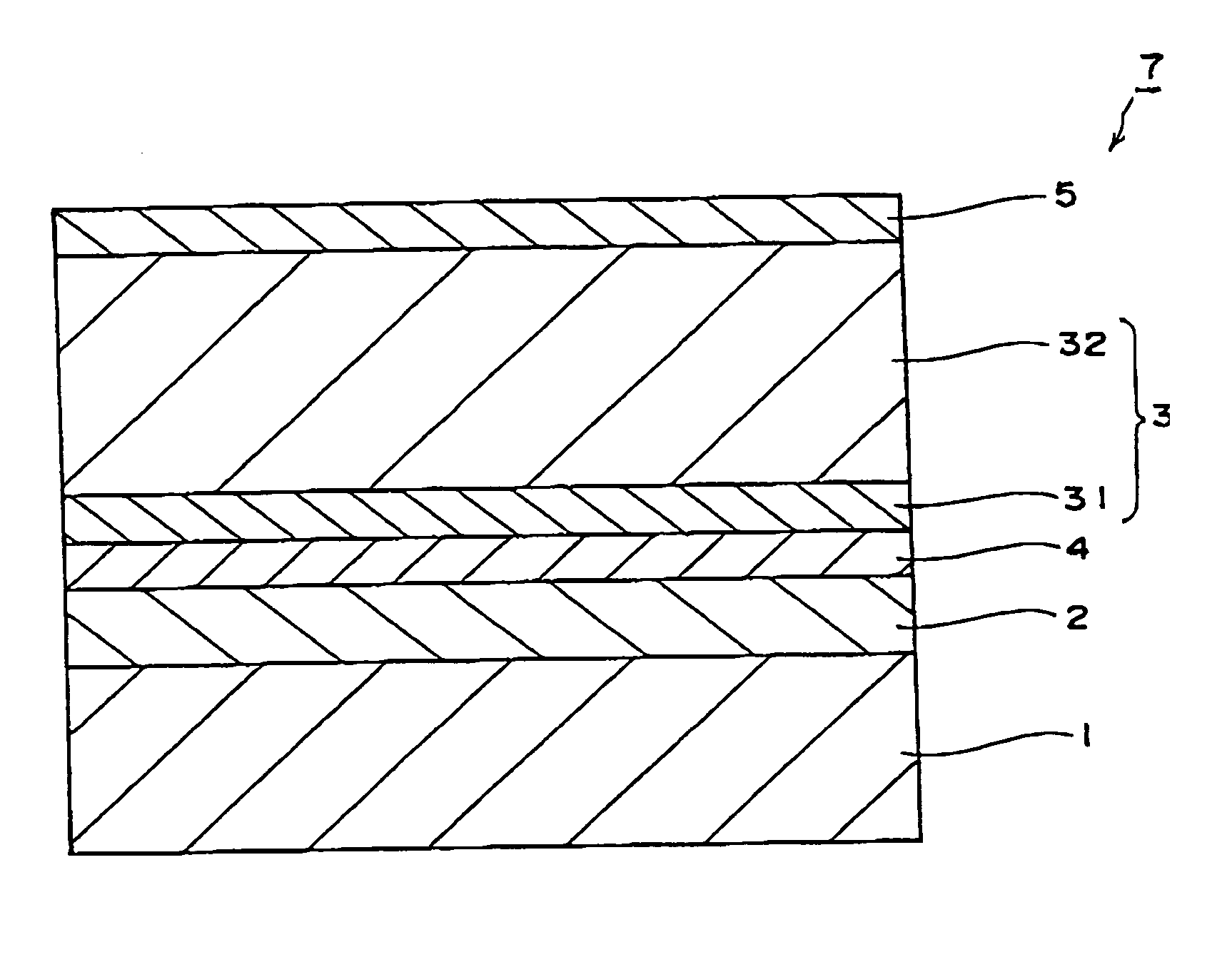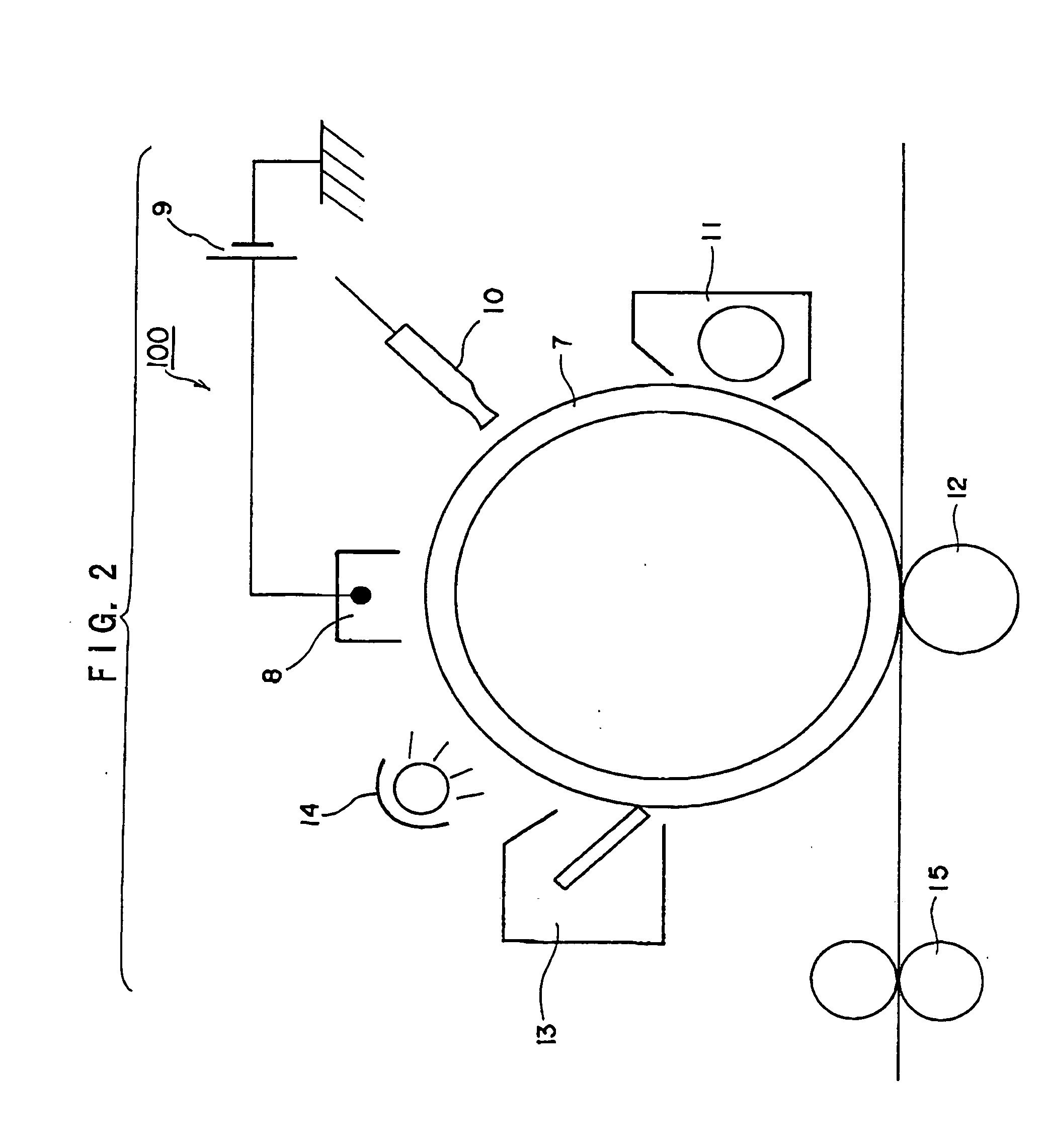Electrophotographic photoreceptor, process cartridge and electrophotographic apparatus
- Summary
- Abstract
- Description
- Claims
- Application Information
AI Technical Summary
Benefits of technology
Problems solved by technology
Method used
Image
Examples
example 1
[0238] A mixture of 100 parts by weight of zinc oxide (manufactured by Tayca Corporation, average particle diameter 70 nm, specific surface area: 15 m2 / g) and 500 part by weight of tetrahydrofuran is stirred; 1.25 parts by weight of a silane coupling agent (KBM603: manufactured by Shin-Etsu Chemical) is added thereto; and the mixture is stirred for 2 hours. Then, tetrahydrofuran is evaporated under reduced pressure; and the residue is baked at 120° C. for 3 hours, to give a zinc oxide pigment with the surface thereof treated with the silane-coupling agent.
[0239] A mixture of 38 parts by weight of a solution of 60 parts by weight of the surface-treated zinc oxide pigment, 0.6 part by weight of alizarin, 13.5 parts by weight of a hardening agent of a blocked isocyanate (Sumidur 3173: manufactured by Sumitomo Bayer Urethane Co.), and 15 parts by weight of a butyral resin (BM-1: manufactured by Sekisui Chemical Co.) in 85 parts by weight of methylethylketone and 25 parts by weight of m...
examples 2 to 4
[0243] Electrophotographic photoreceptors are prepared in a similar manner to EXAMPLE 1, except that the metal oxide surface-treated with a silane coupling agent and the electron acceptor compound used in EXAMPLE 1 are replaced with the compounds shown in Table 1, and the performance thereof is evaluated. Results are summarized in Table 11.
PUM
 Login to View More
Login to View More Abstract
Description
Claims
Application Information
 Login to View More
Login to View More - R&D
- Intellectual Property
- Life Sciences
- Materials
- Tech Scout
- Unparalleled Data Quality
- Higher Quality Content
- 60% Fewer Hallucinations
Browse by: Latest US Patents, China's latest patents, Technical Efficacy Thesaurus, Application Domain, Technology Topic, Popular Technical Reports.
© 2025 PatSnap. All rights reserved.Legal|Privacy policy|Modern Slavery Act Transparency Statement|Sitemap|About US| Contact US: help@patsnap.com



